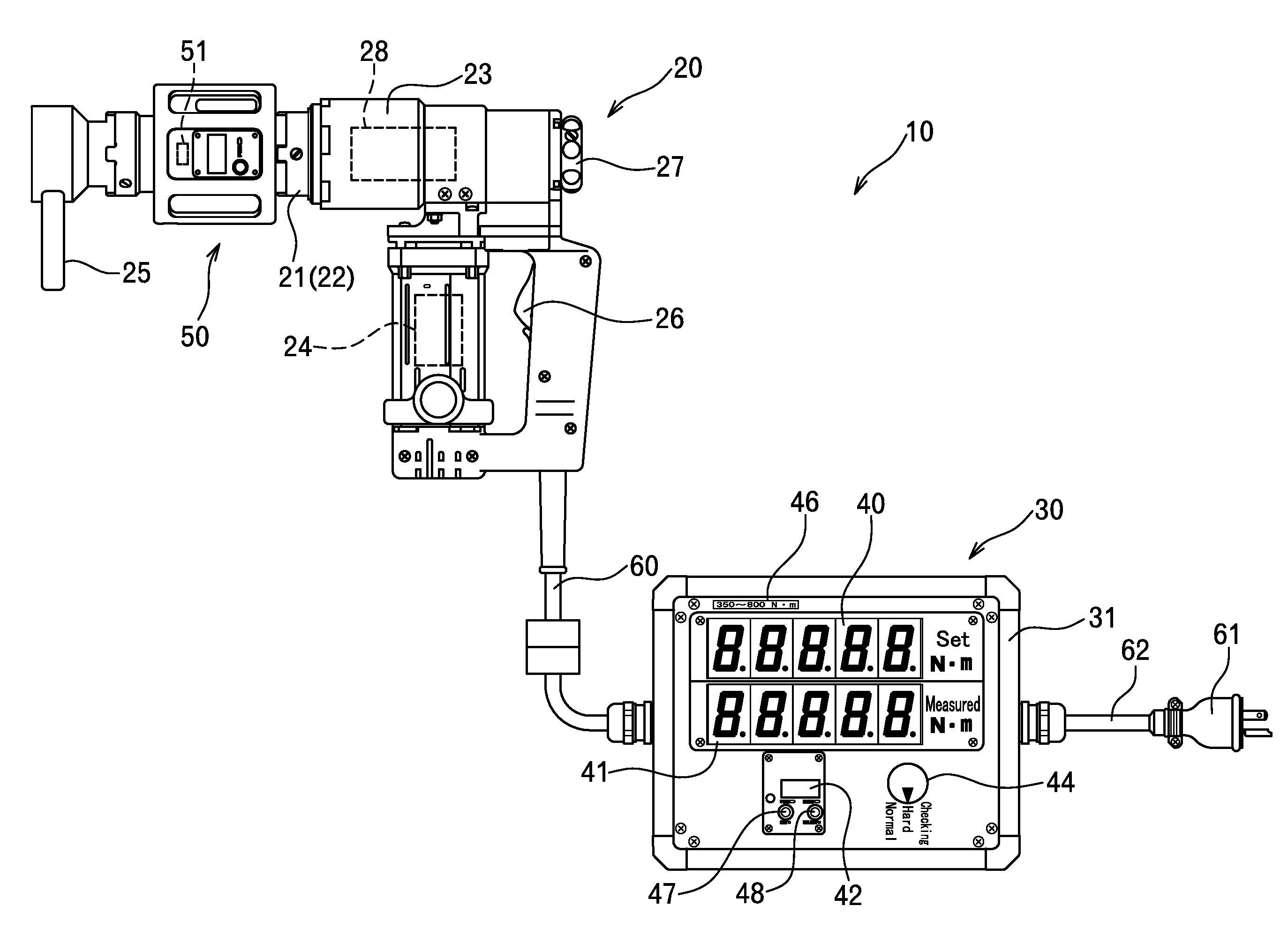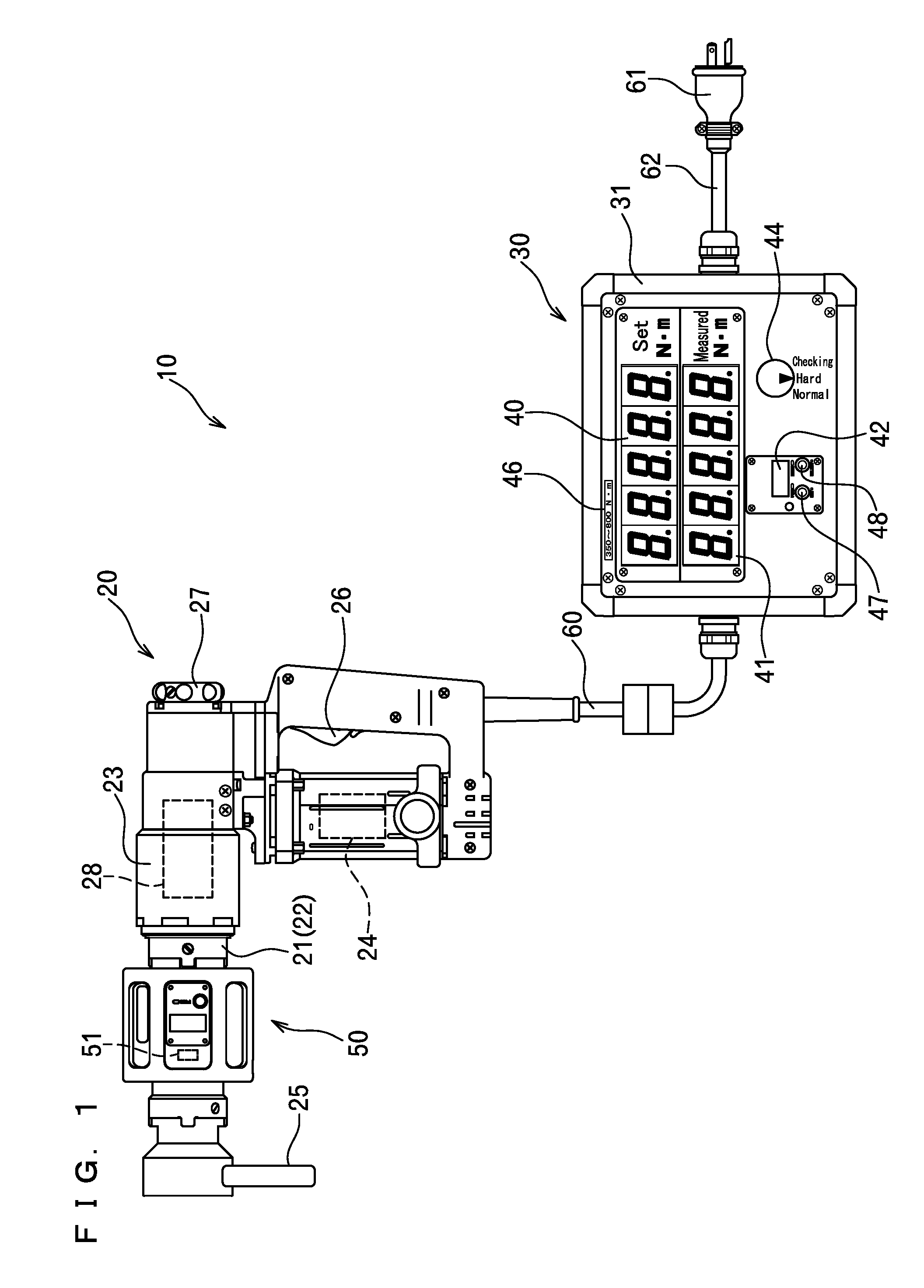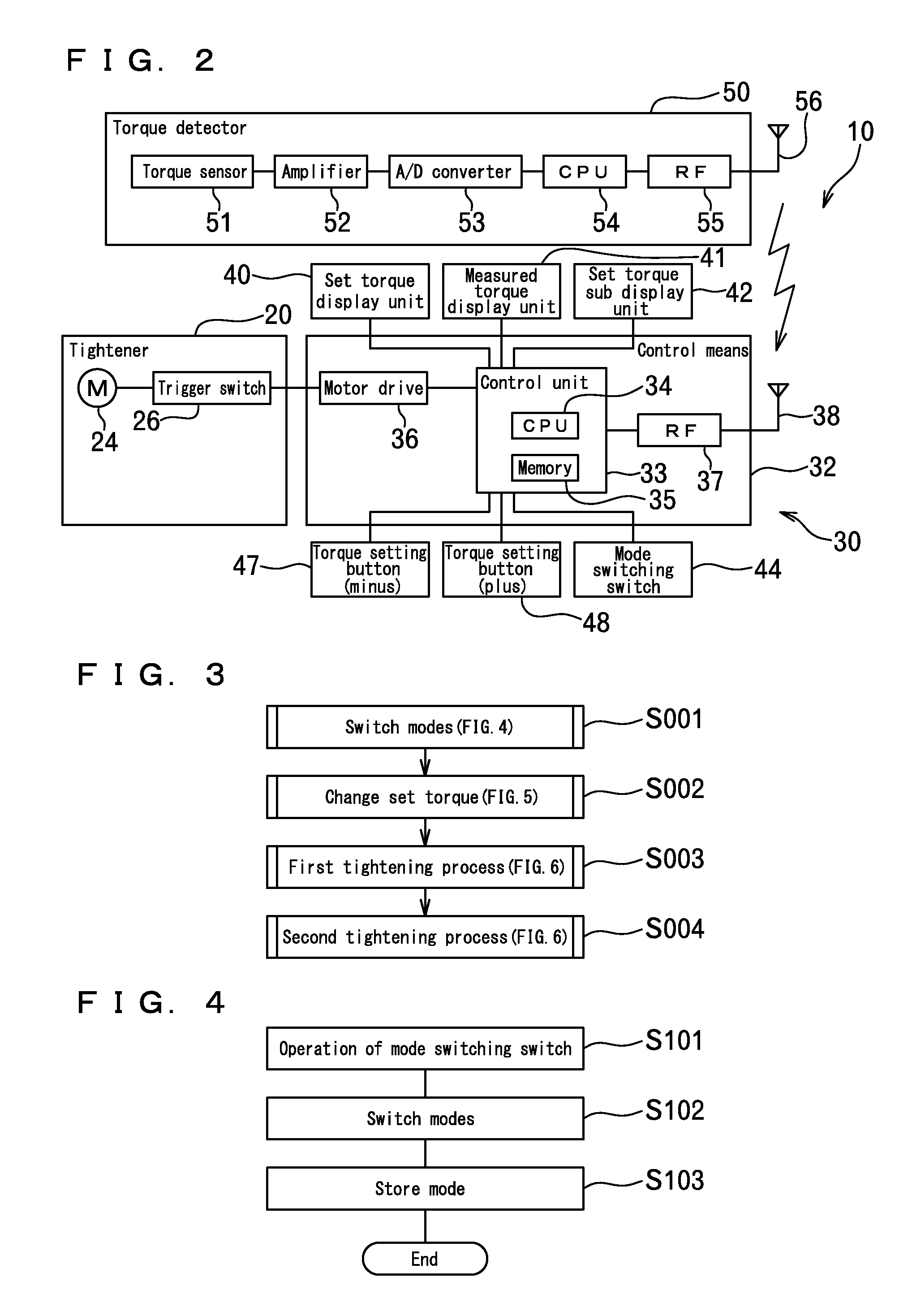Tightening device and tightening method
a technology of tightening device and tightening method, which is applied in the direction of wheel mounting apparatus, portable power-driven tools, manufacturing tools, etc., can solve the problem of difficulty in determining whether the tightening torque has really reached the set torque, and achieve the effect of increasing the torque and decreasing the torqu
- Summary
- Abstract
- Description
- Claims
- Application Information
AI Technical Summary
Benefits of technology
Problems solved by technology
Method used
Image
Examples
working examples
Example 1
[0078]Tightening of a fastening target with respect to which the torque increment from 10% to 100% of the target torque is equivalent to an angular displacement of 27 degrees or less was performed. In the tightening, a F10T high-tensile hexagon bolt (JIS B 1186) having an M45 nominal diameter and a length of 130 mm was used as a fastening member on a steel plate having a thickness of 51 mm.
[0079]The set torque was T=600 N·m, and the normal tightening mode and the hard tightening mode were each implemented from an 10 N·m seated state as the first tightening process. The results are shown in FIG. 10.
[0080]Referring to FIG. 10, the tightening torque in the normal tightening mode greatly overshoots more than the hard tightening mode. This indicates that the hard tightening mode is suitable for the first tightening process on a fastening target with respect to which the torque increment from 10% to 100% of the target torque is equivalent to an angular displacement of 27 degrees ...
example 2
[0084]Tightening of a fastening target with respect to which the torque increment from 10% to 100% of the target torque is equivalent to an angular displacement of over 27 degrees was performed. In the tightening, a F10T high-tensile hexagon bolt (JIS B 1186) having an M24 nominal diameter and a length of 90 mm was used as a fastening member on a steel plate having a thickness of 40 mm.
[0085]The set torque was T=600 N·m, and the normal tightening mode and the hard tightening mode were each implemented from an 10 N·m seated state as the first tightening process. The results are shown in FIG. 11.
[0086]Referring to FIG. 11, the tightening torque in the normal tightening mode greatly overshoots more than the hard tightening mode. However, the amount of overshoot amount is small compared with the Example 1. Accordingly, it is evident that the normal tightening mode in which tightening can be performed in a short time is suitable for the first tightening process on a fastening target with...
PUM
 Login to View More
Login to View More Abstract
Description
Claims
Application Information
 Login to View More
Login to View More - R&D
- Intellectual Property
- Life Sciences
- Materials
- Tech Scout
- Unparalleled Data Quality
- Higher Quality Content
- 60% Fewer Hallucinations
Browse by: Latest US Patents, China's latest patents, Technical Efficacy Thesaurus, Application Domain, Technology Topic, Popular Technical Reports.
© 2025 PatSnap. All rights reserved.Legal|Privacy policy|Modern Slavery Act Transparency Statement|Sitemap|About US| Contact US: help@patsnap.com



